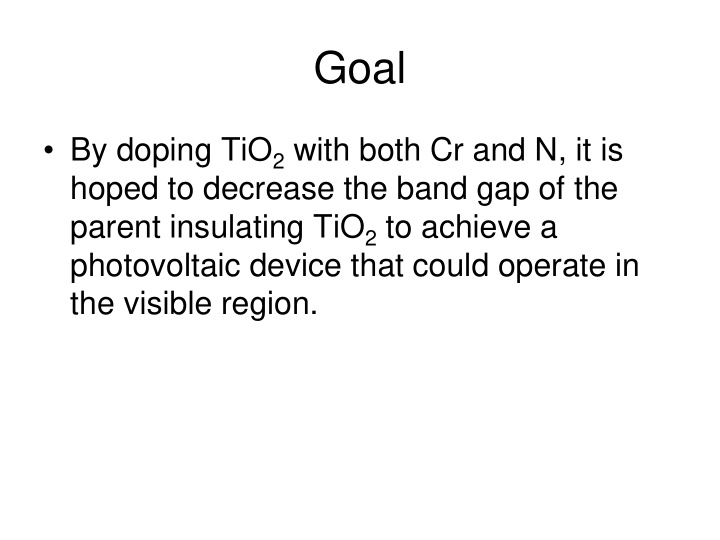



Goal • By doping TiO 2 with both Cr and N, it is hoped to decrease the band gap of the parent insulating TiO 2 to achieve a photovoltaic device that could operate in the visible region.
Samples • Powder Cr/N TiO 2 : N was not stable • Amorphous 3% Cr, N, and Cr/N TiO 2 300C • Rutile 5% Cr/N TiO 2 : 350C-800C • Anatase 3% N TiO 2 : 350C-800C • Rutile Cr, N, and Cr/N TiO 2 700C • Rutile Cr/N TiO 2 700C diff pressure
Nitrogen
N K XAS
N only TiO 2 300C (noncry)
Cr/N TiO 2 300C (noncry)
N-K XAS
Cr/N 350C Rutile (uncalibrated)
Cr/N 550C Rutile (uncalibrated)
Cr/N 800C Rutile
Difference Spectra
N K Anatase TiO 2
Cr, N, Cr/N TiO 2 700C
Cr/N Rutile 700C
N Rutile 700C
Cr/N 3x10-4T 5-24-10
TiN
Oxidized TiN
Oxygen and Chromium
Cr, Cr/N, and undoped TiO 2 300C
O K and Cr L 2,3 edges
Cr, N, Cr/N TiO 2 700C
Titanium
TiO 2 and Cr/N TiO 2 300C
Undoped TiO 2 300C (not normalized)
Cr/N TiO 2 300C (not normalized)
Ti L 2,3 edge
Ti L 2,3 edge
Ti Emission ALS June 2010
Cr/N TiO 2 800C Rutile
Optical Absorption
Recommend
More recommend